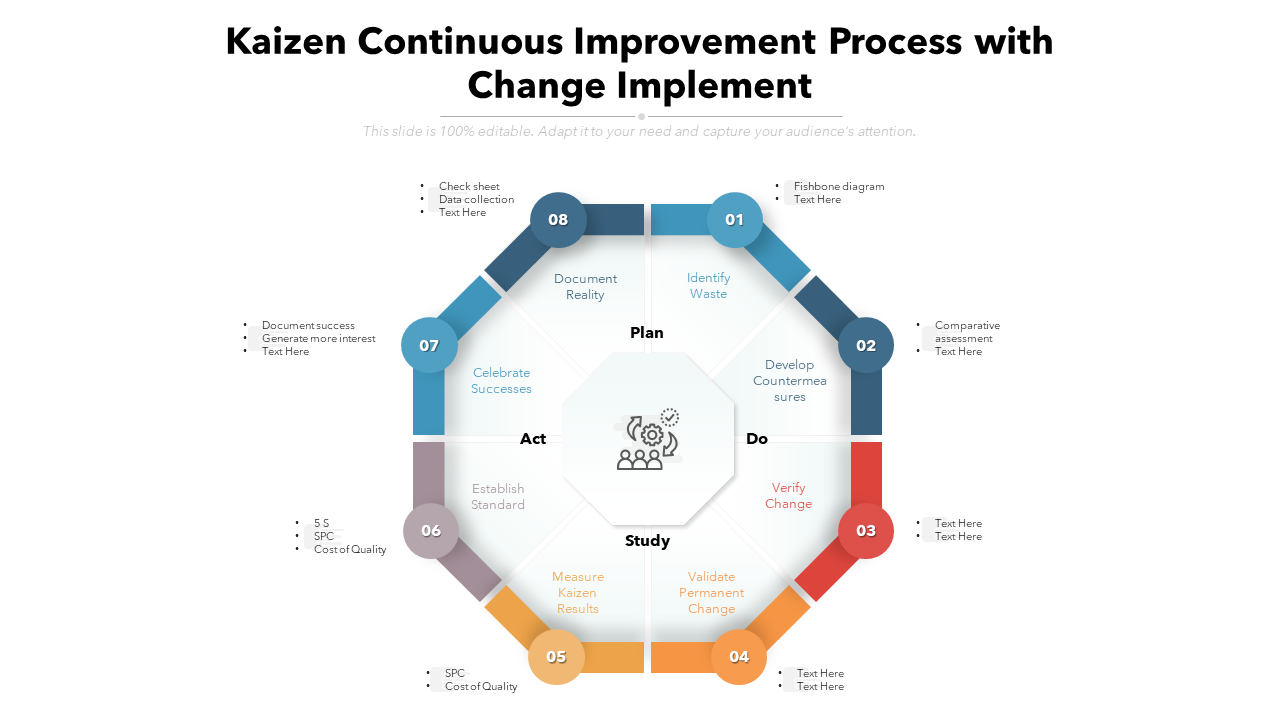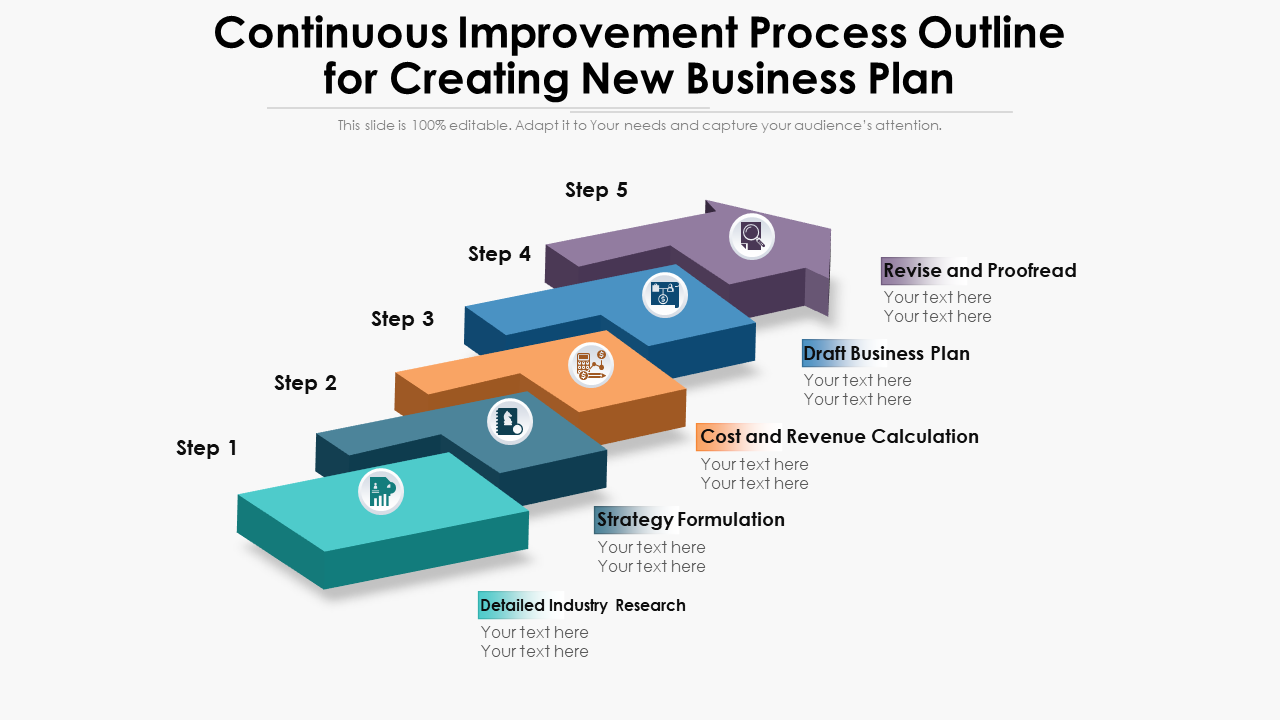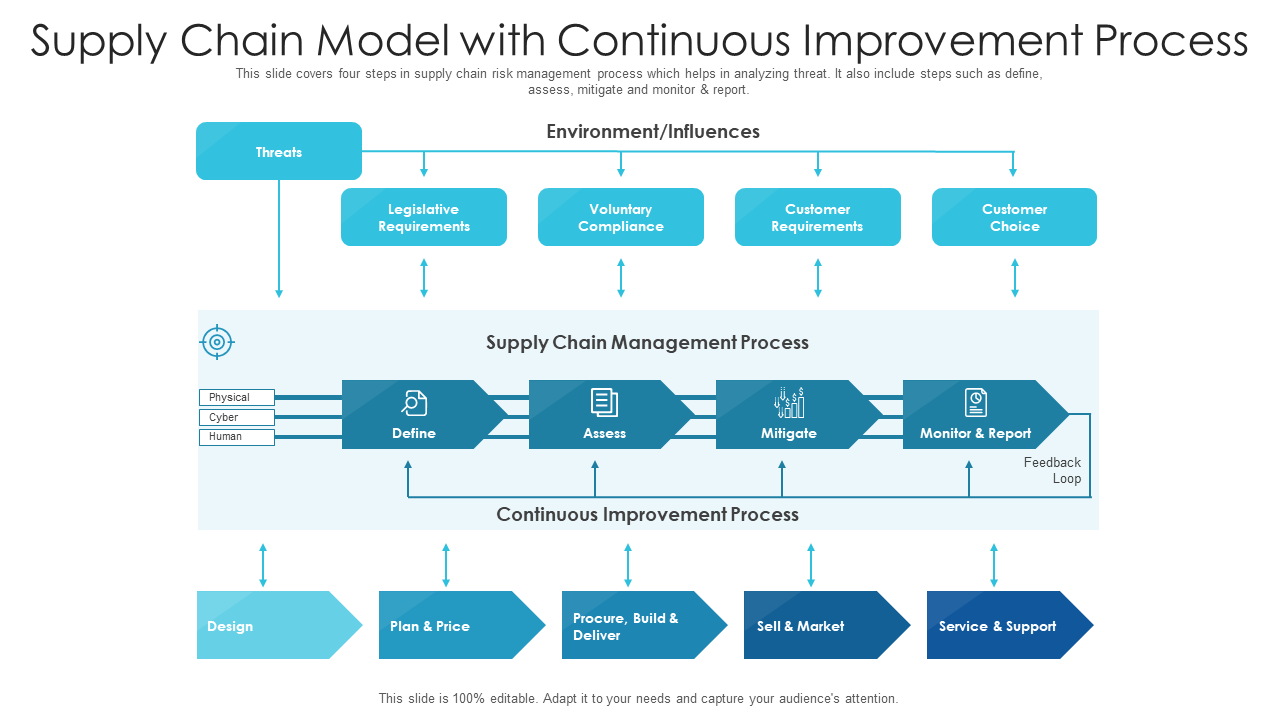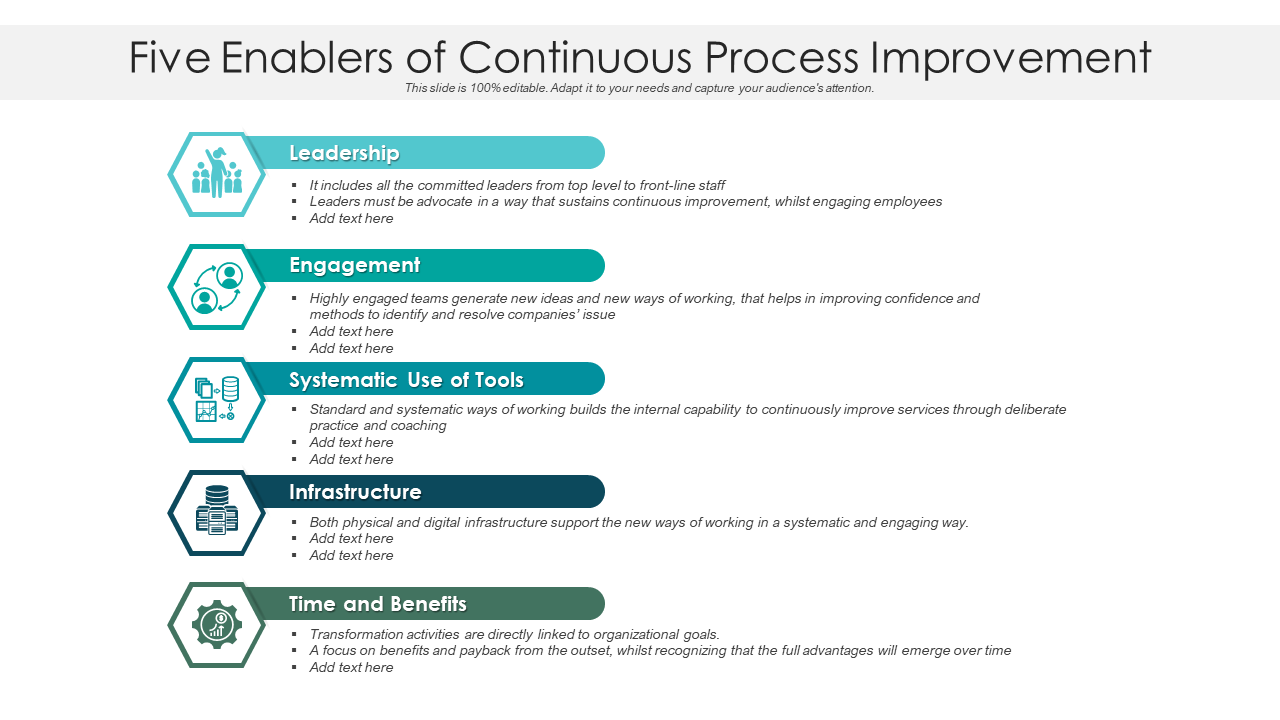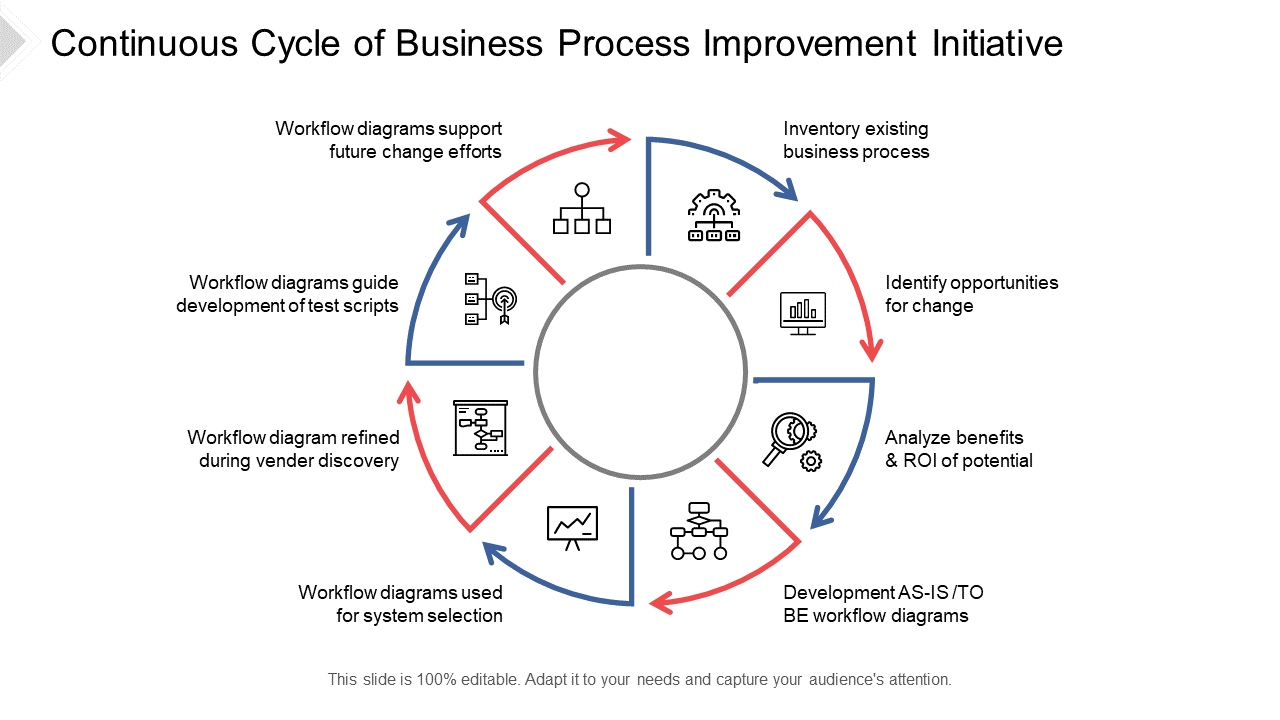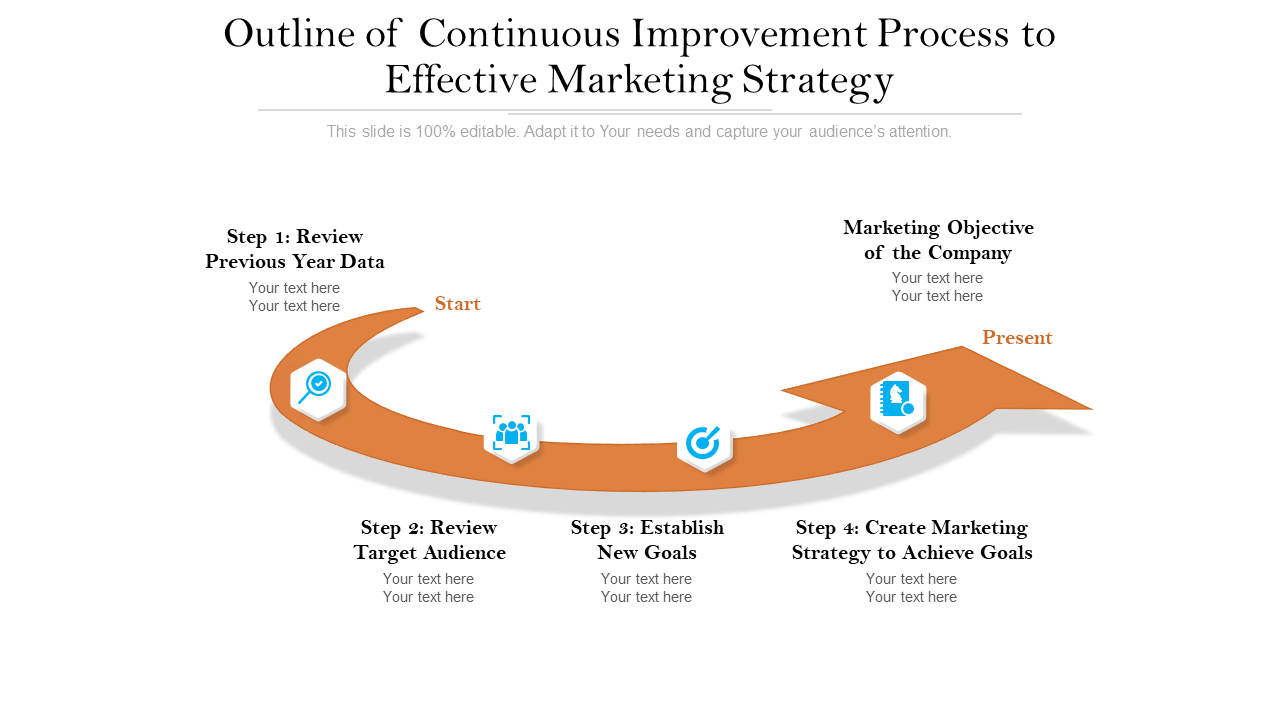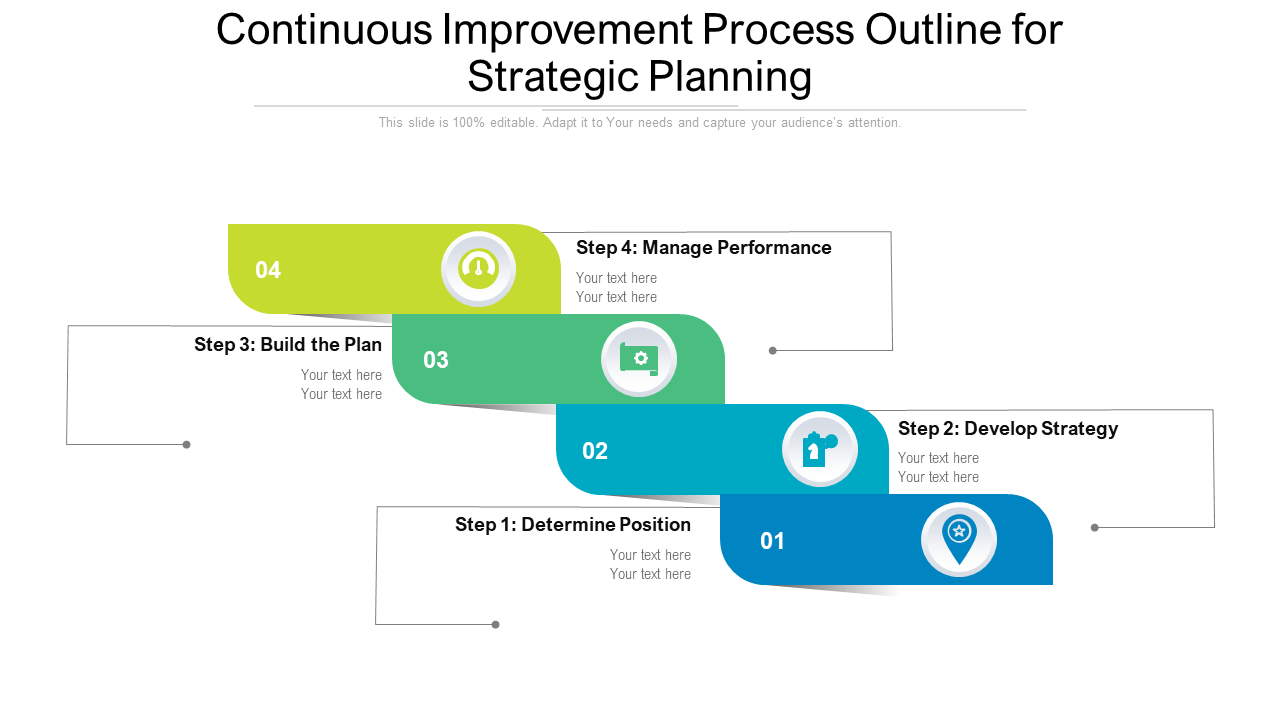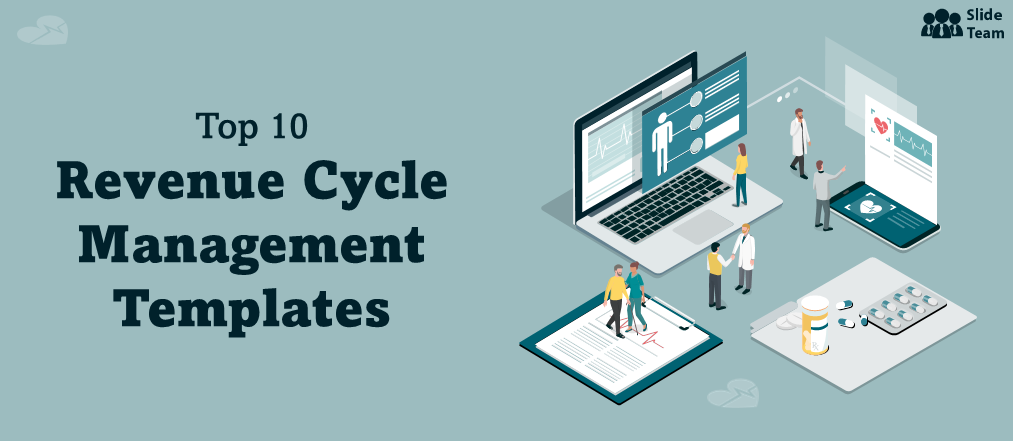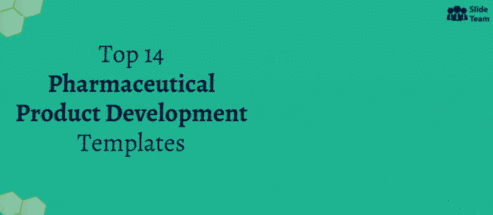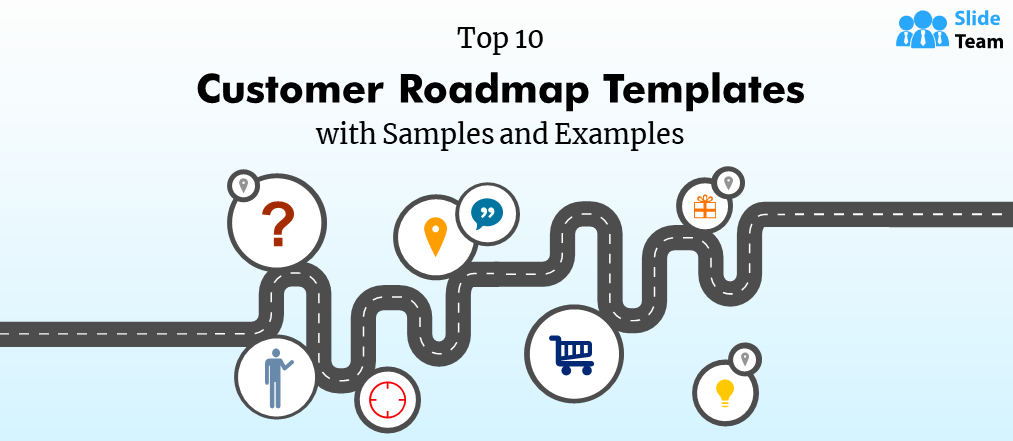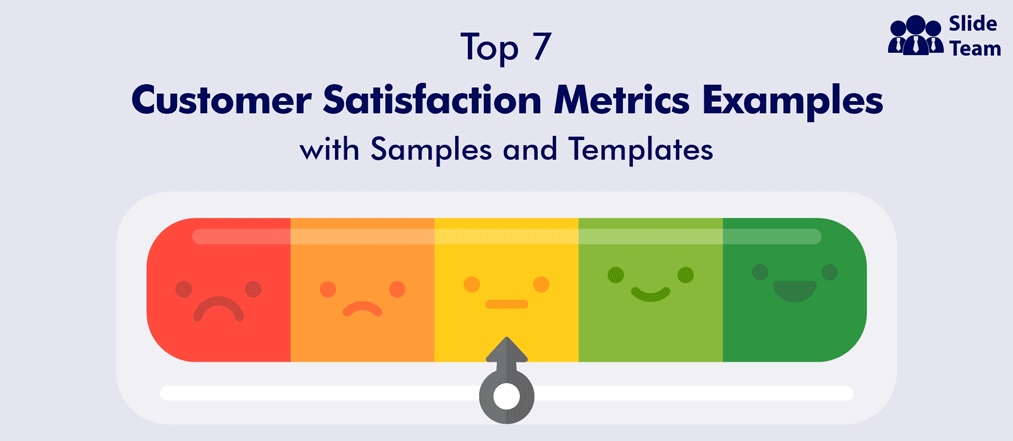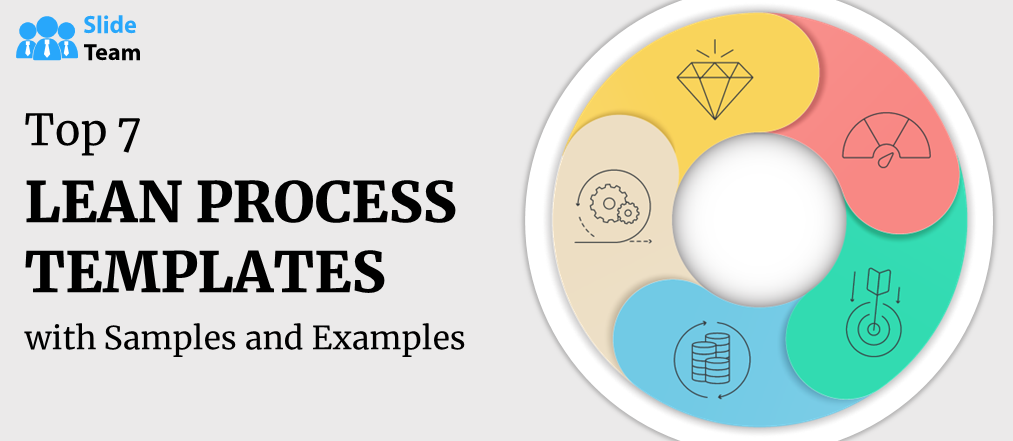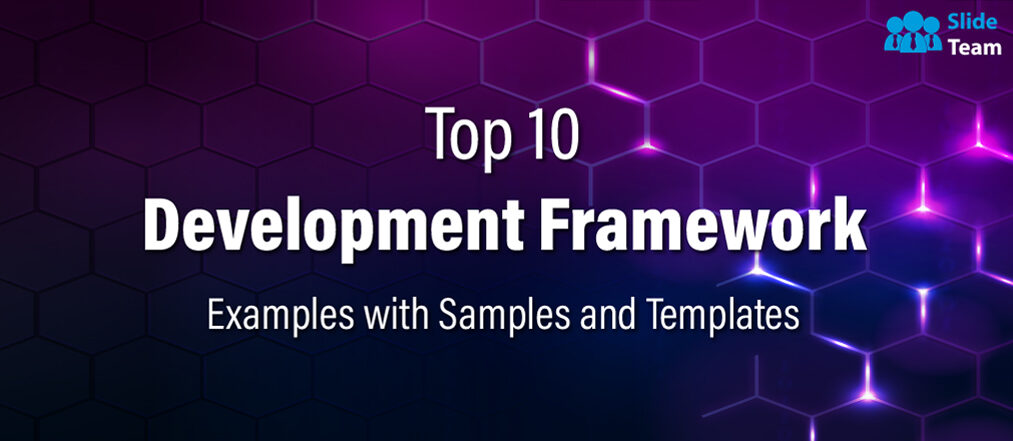“Continuous Improvement is better than delayed perfection,” says Mark Twain.
The quote aptly represents the mantra that businesses need to follow, as they strive to offer value to the customers and stakeholders. The key input to this often being: customer feedback. Sometimes, companies like Apple decide to offer the customer their version of the value. Based on their own evaluation, betting on their knowledge of the customer psyche and assessment of how to get businesses on the path of Continuous Process Improvement (CIP) is the way to do it.
The CIP involves a cyclic evaluation of production, processing, and logistics to identify an efficient operational schematic. Originating from the Japanese term, Kai-zen, the process of continuous improvement today is how tech-giants like Apple, Google, and Amazon, have become the best at what they do.
Within the process of continuous improvement, the management employs the Plan, Develop, Check and Act (PDCA) Cycle among other CIP-specific techniques. The ultimate aim is to create efficient systems, thereby eliminating waste, while maintaining your brand identity.
Of course, implementing a CIP is impossible without getting your team on the same page. Defining means of gathering market data, identifying trends, or simply doing it the way Apple does it (i.e. by aiming for the future to develop technologies that customers would need) requires streamlined efforts. Professionals will do it with Continuous Improvement Process Templates. With its help you can prepare your team on the how, why, and when of implementing a CIP to generate better results. It’s because with easy-to understand diagrams, vivid graphics, and comprehensive presentations, you can point your team in the right direction.
Our Solution
To develop these training materials from scratch is tedious and time-consuming. Therefore SlideTeam’s world-class professionals offer you such expert-designed continuous improvement process templates that are content-ready. A few changes to these pre-designed yet 100% editable PPT Templates and your training sessions will be good to go. Check out these continuous improvement process templates now.
Template 1: Continuous Improvement Process Overview PPT Presentation
Conduct Total Quality Management in your organization by planning a continuous improvement process. This PPT Presentation is a content-ready toolkit filled with graphs, diagrams, and training materials and is a complete guide that your team can follow. Fire up the continuous process improvement with complete knowledge of all formats of TQM model like TQM Model, Pyramid, customer focus in TQM and Business Process Improvement. We also dig deep into the determinants of TQM and the determinants of the quality of products and services. Download now!
Template 2: Continuous Improvement PowerPoint Template
Employ this dedicated PPT Presentation to define methodologies for implementing a continuous improvement process for your organization. Enlist all continuous improvement tools and techniques that you need to be familiar with. Schedule activities, define screening programs, and establish parameters to be met in this continuous improvement cycle. Without further ado, grab this content-ready, infographic rich PPT Template now!
Template 3:Continual Service Improvement Process Template
Summarize the continuous improvement process models for the organizational operations with this detailed PPT Template. The beauty of this presentation is the innumerable diagram and sketch collection to help you and your team visualize roadmaps for implementing continuous improvement. All you have to do is input steps and processes based on your research and experience into these 100% editable PPT Diagrams and Excel-linked Charts. Download his comprehensive continuous improvement process template now!
Template 4: Kaizen Continuous Improvement Process Template
Implement a continuous improvement cycle within your organization with the help of kaizen tool diagrams. Plan, Do, Study, and Act to enhance efficiency in your organizational inputs and outputs using this diagrammatic continuous improvement process template. Customize this diagram for organizational tasks and eliminate wastage by delivering quality. Download this easy-to-understand PPT Layout to ensure this happens.
Template 5: Continuous Improvement Process Outline Template
Revise your new business plan by performing a continuous improvement process of its framework with this staircase diagram. List all activities converging in the final look of this new and effective business plan. This would include, a detailed industry research, strategy formulation, cost and revenue collection etc, Implement a PDSA or PDCA Cycle to finally come up with a foolproof business plan. Download this PPT Layout now to plant a successful business with this PPT Template.
Template 6: Supply Chain Model With Continuous Improvement Process Template
Improve the efficiency of your supply chain by implementing continuous improvement techniques with this PPT Guide. As shown in this PPT Diagram, define the routine operations of your supply chain and apply the continuous improvement cycle to improve the efficiency and quality of the process. You can also point out influences such as environmental or human that intervene the operations so that you can tune the process of continuous improvement accordingly. Inform and improve by downloading this PPT Design now!
Template 7: Five Enablers of Continuous Process Improvement Template
Point out to your team the five enablers of continuous process improvement with this content-ready PPT Design. You can elaborate on how to implement these core enablers namely leadership, engagement, tools, infrastructure, and time due to this slide’s editable nature. Discuss these crucial parameters and how they impact the overall quality and efficiency expectations by downloading it now!
Template 8: Continuous Cycle of Business Process Improvement Template
Renew business processes to improve efficiency with this continuous improvement cyclic diagram. Define the existing operations and embed continuous improvement processes in between that would help deliver overall effective results. Customize this cyclic diagram to include steps relevant to business operations. Get this continuous improvement process template now! .
Template 9: Marketing Strategy Outline of Continuous Improvement Process Template
Refine your marketing strategy by implementing continuous improvement tools with this guided PPT Layout. Lay down the series of steps involved in reviewing previous performance and target audience as the key steps as shown in this presentation template. Next define your new goal and marketing strategies to achieve them to achieve the anticipated results. Claim this continuous improvement process template now from the link below to create your outline for the road to success.
Template 10: Continuous Improvement Process Outline for Strategic Planning Template
Define the road to strategic planning with this continuous improvement process template. Outline the steps as you incorporate continuous improvement in your business working. Revise previous operations in your quest to improve system efficiency and label the renewed steps in this editable PPT Design. Use this staircase diagram to explain the new framework of strategic plan better. Download now!
QUALITY IN ACTION
Revitalize your business operations by using our continuous improvement process templates today and witness efficiency and quality effusing from everywhere.
PS: Lean is another technique aimed to maximize efficiency while eliminating waste that businesses use. Know more about lean technology and how to implement it with content-ready PPT Templates collated in this guide.
FAQs on Continuous Improvement Process
What is meant by continuous process improvement?
Continuous process improvement refers to an ongoing effort to enhance and optimize processes within an organization. It involves constantly reviewing and refining processes to achieve better results, increase efficiency, and improve overall performance.
The concept of continuous process improvement is rooted in the philosophy of continuous improvement, which originated from the Japanese manufacturing approach known as Kaizen. It emphasizes the importance of making small, incremental changes over time to drive significant improvements.
Key principles of continuous process improvement include:
- Identify areas for improvement: This can be done through data analysis, feedback from stakeholders, and benchmarking against industry best practices.
- Set goals and metrics: These goals should be specific, measurable, achievable, relevant, and time-bound (SMART goals).
- Plan and implement changes: This may involve redesigning processes, streamlining workflows, adopting new technologies, or retraining employees.
- Continuous monitoring: This can be done through performance metrics, key performance indicators (KPIs), and regular feedback loops.
- Employee involvement: Employees are often closest to the processes and can provide insights and suggestions for improvement. Engaging and empowering employees fosters a culture of continuous improvement.
- Iterative approach: Continuous improvement is an iterative process. It involves making incremental changes, measuring their impact, and then making adjustments based on results. It ensures that processes are constantly evolving and adapting to meet changing needs.
What are the four stages in continuous improvement?
The four stages of continuous improvement are often referred to as the Deming Cycle or the PDCA Cycle. PDCA stands for Plan, Do, Check, and Act. These stages provide a systematic approach for implementing and sustaining continuous improvement efforts. Here's an overview of each stage:
- Plan: It involves gathering data, analyzing the current state, and defining a clear plan for improvement. Key activities include setting specific improvement targets, identifying root causes of problems, and developing an action plan.
- Do: This may involve making changes to processes, implementing new technologies or methodologies, or introducing new procedures. It is important to document the changes made and ensure that relevant stakeholders are involved and informed. The implementation should be carried out in a controlled and measured manner.
- Check: Data is collected and analyzed to assess whether the intended improvements have been achieved. Key performance indicators (KPIs) and metrics are used to monitor progress and compare it against the established goals. The check stage helps identify any gaps between the expected outcomes and the actual results.
- Act: If the results align with the desired outcomes, the organization can standardize and institutionalize the changes. This may involve updating standard operating procedures, training employees, or implementing changes on a broader scale. If results are not satisfactory, the organization can go back to the planning stage and refine the improvement plan based on the feedback and insights gained during the PDCA cycle.
What are three methods to continuous improvement?
The three commonly used methods are:
Lean: Lean methodology, also known as Lean Manufacturing or Lean Six Sigma, focuses on reducing waste and optimizing processes. It originated from the Toyota Production System and has since been applied across industries. Lean principles include identifying and eliminating activities that do not add value, streamlining workflows, improving efficiency, and promoting a culture of continuous improvement. Tools such as value stream mapping, 5S (Sort, Set in Order, Shine, Standardize, Sustain), and Kaizen events are used in Lean.
Six Sigma: Six Sigma is a data-driven methodology that aims to minimize defects and variations in processes. It focuses on reducing process variation and improving quality by using statistical analysis and measurement. The Six Sigma approach involves defining the problem, measuring current performance, analyzing data, implementing improvements, and controlling the process to sustain the gains. Tools such as DMAIC (Define, Measure, Analyze, Improve, Control), process capability analysis, and statistical process control (SPC) charts are commonly used in Six Sigma.
Agile: Originally developed for software development, Agile methodologies have gained popularity. Agile emphasizes collaboration, flexibility, and iterative development. It involves breaking down projects or processes into smaller, manageable tasks and iterations, allowing for faster feedback, adaptation, and continuous improvement. Agile frameworks such as Scrum and Kanban promote regular meetings, transparency, and continuous learning. Agile methods encourage teams to reflect on their work, make adjustments, and improve incrementally.
Additionally, there are other methodologies and tools available, such as Total Quality Management (TQM), Plan-Do-Study-Act (PDSA), and Root Cause Analysis (RCA), which can also be used for continuous improvement.
What is an example of a continuous improvement process?
Let’s understand the commonly employed PDCA technique of continuous improvement process with an example of Supply Chain Optimization:
- Plan: A retail company aims to optimize its supply chain by reducing lead times and improving inventory management. They analyze their supply chain processes, identify inefficiencies, and set goals to enhance efficiency and responsiveness.
- Do: The company implements a demand forecasting system that uses historical sales data and market trends to improve inventory planning. They also establish partnerships with key suppliers to streamline the procurement process and reduce lead times.
- Check: The company regularly monitors key supply chain metrics such as order fulfillment time, stockout rates, and inventory turnover. They compare the data against the established goals to evaluate the impact of the changes. They also seek feedback from suppliers and customers to gain insights.
- Act: The analysis reveals that while the lead times have reduced, there are still occasional stockouts affecting customer satisfaction. The company identifies the need for better demand forecasting accuracy and decides to collaborate more closely with suppliers to align production and delivery schedules.
- Plan (again): Based on the findings, the company refines its demand forecasting methodologies, explores advanced analytics tools, and strengthens communication channels with suppliers.
- Do (again): The company implements the refined demand forecasting methods, establishes regular communication channels with suppliers, and continues to monitor and analyze supply chain performance. They make ongoing adjustments as well.


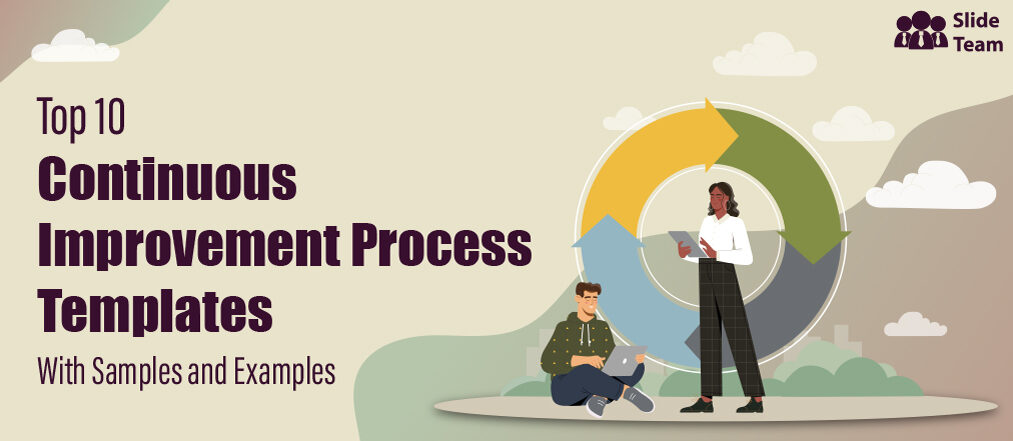


 Customer Reviews
Customer Reviews




